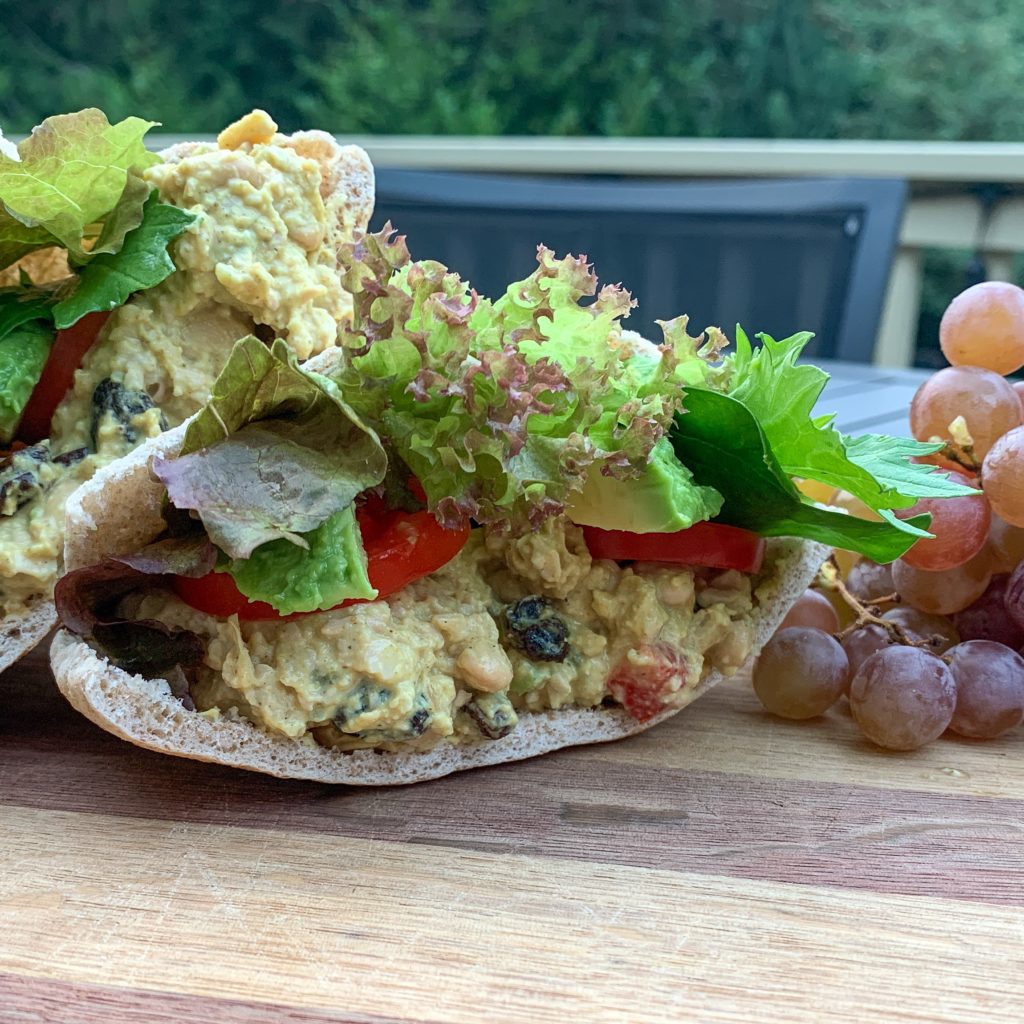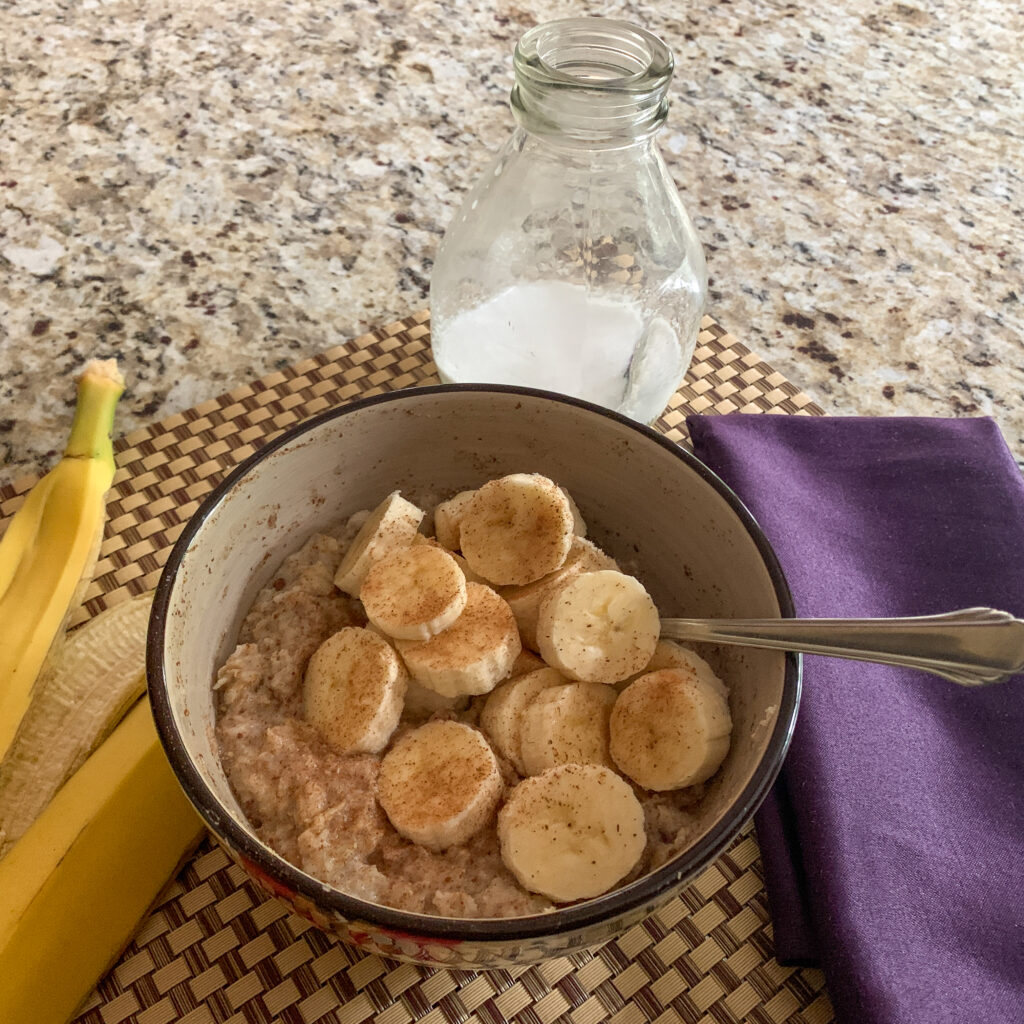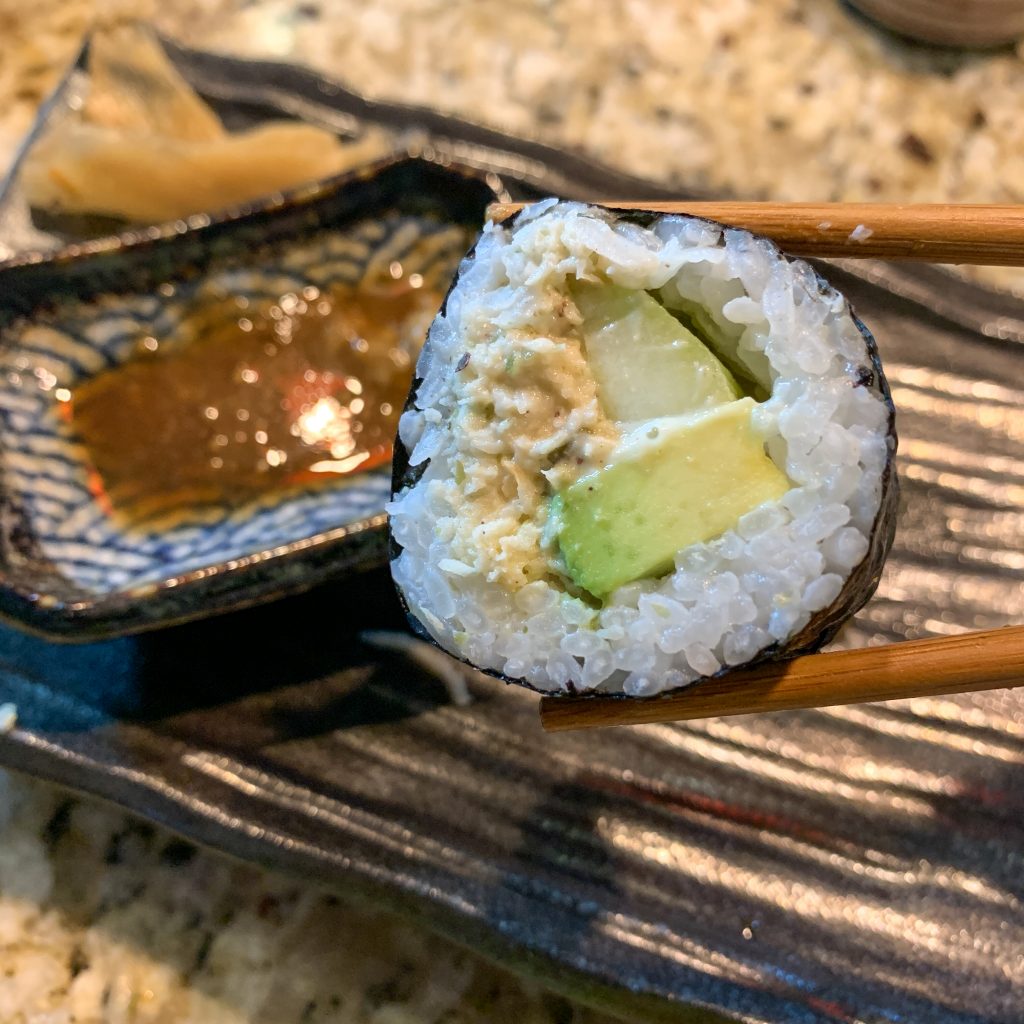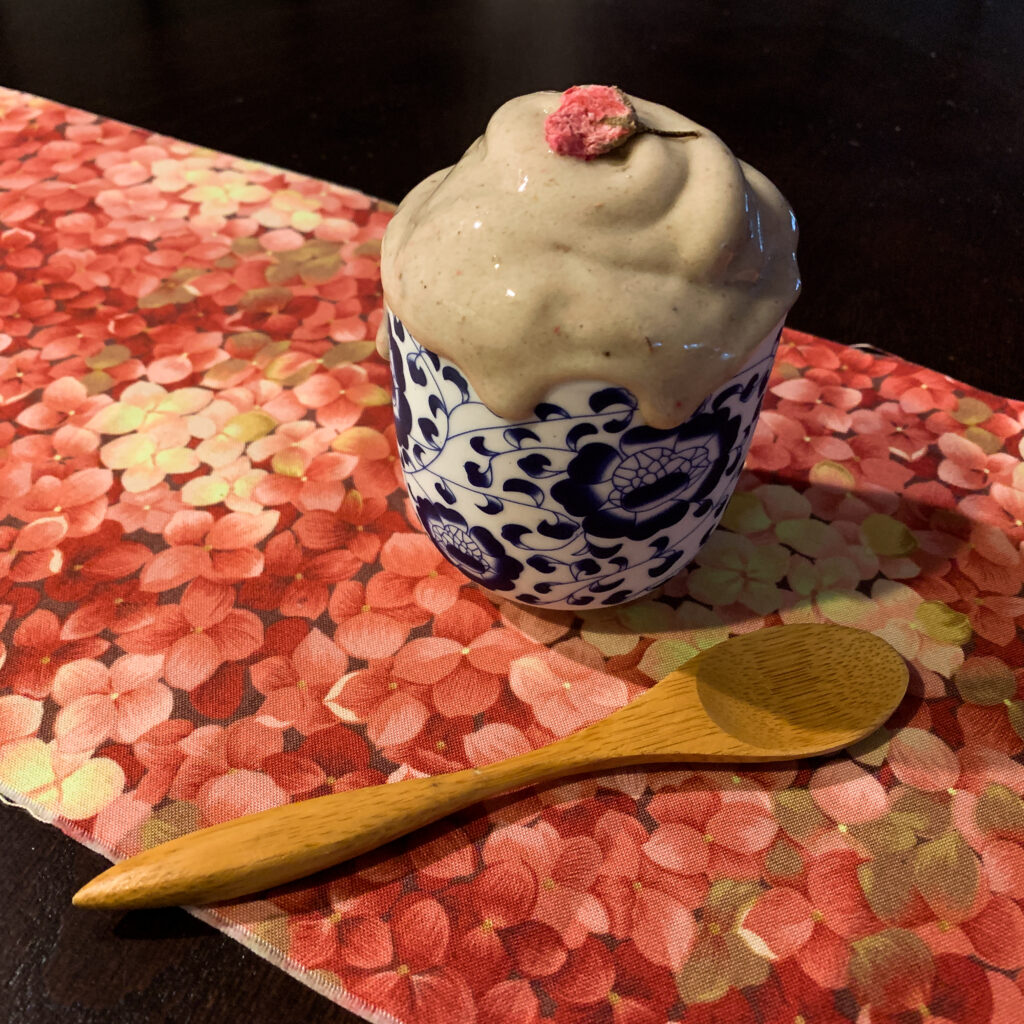Stop and Eat the Flowers
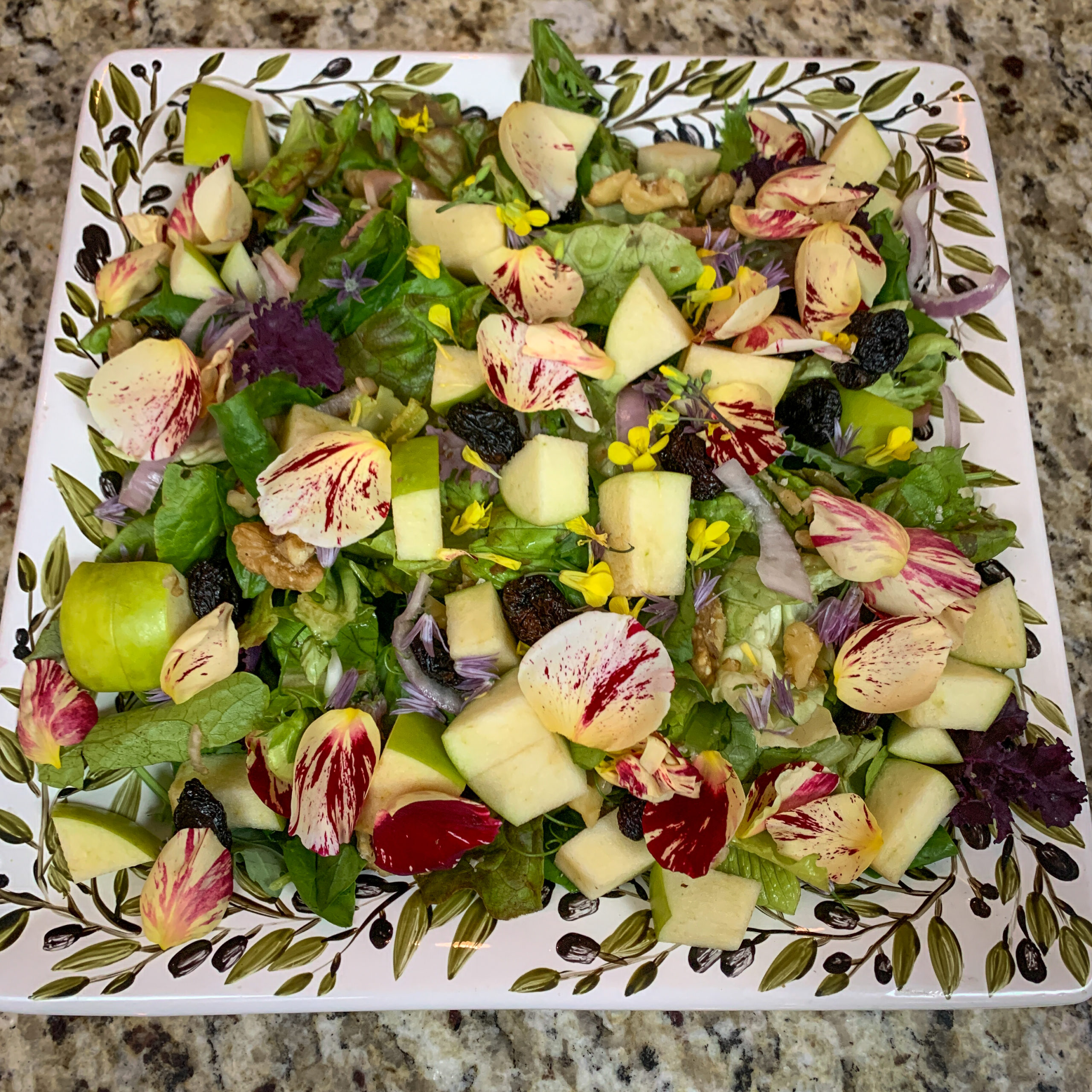
Rose petals and kale blossoms turn an ordinary green salad into something extraordinary!
It’s summertime and the garden is in full bloom. I just love the gorgeous colors, scents, and the wildlife they attract. And we love eating many of these beautiful blossoms as well!
Like the different colors in fruits and vegetables, pigments in flowers are full of antioxidants and beneficial phytonutritients. Flowers add to our rainbow of eating, just like the fruits and vegetable colors listed in last week’s blog post, Eat the Rainbow. Many studies have looked at the antioxidant properties of flowers, including:
Five Edible Flowers – Valuable Source of Antioxidants in Human Nutrition
Edible Flowers: A Rich Source of Phytochemicals with Antioxidant and Hypoglycemic Properties
Not all flowers are edible, in fact some are even poisonous. Always check with plant guides and even this Poison Control guide prior to eating plants or flowers you don’t know the edible status of. Also, you want to make sure the flowers you’re choosing haven’t been sprayed with pesticides, fungicides, or other harmful sprays. Either grow them yourself where you know the status or purchase from a reputable grower.
Beautiful and Tasty Flowers to Liven Up Your Dinner Plate:
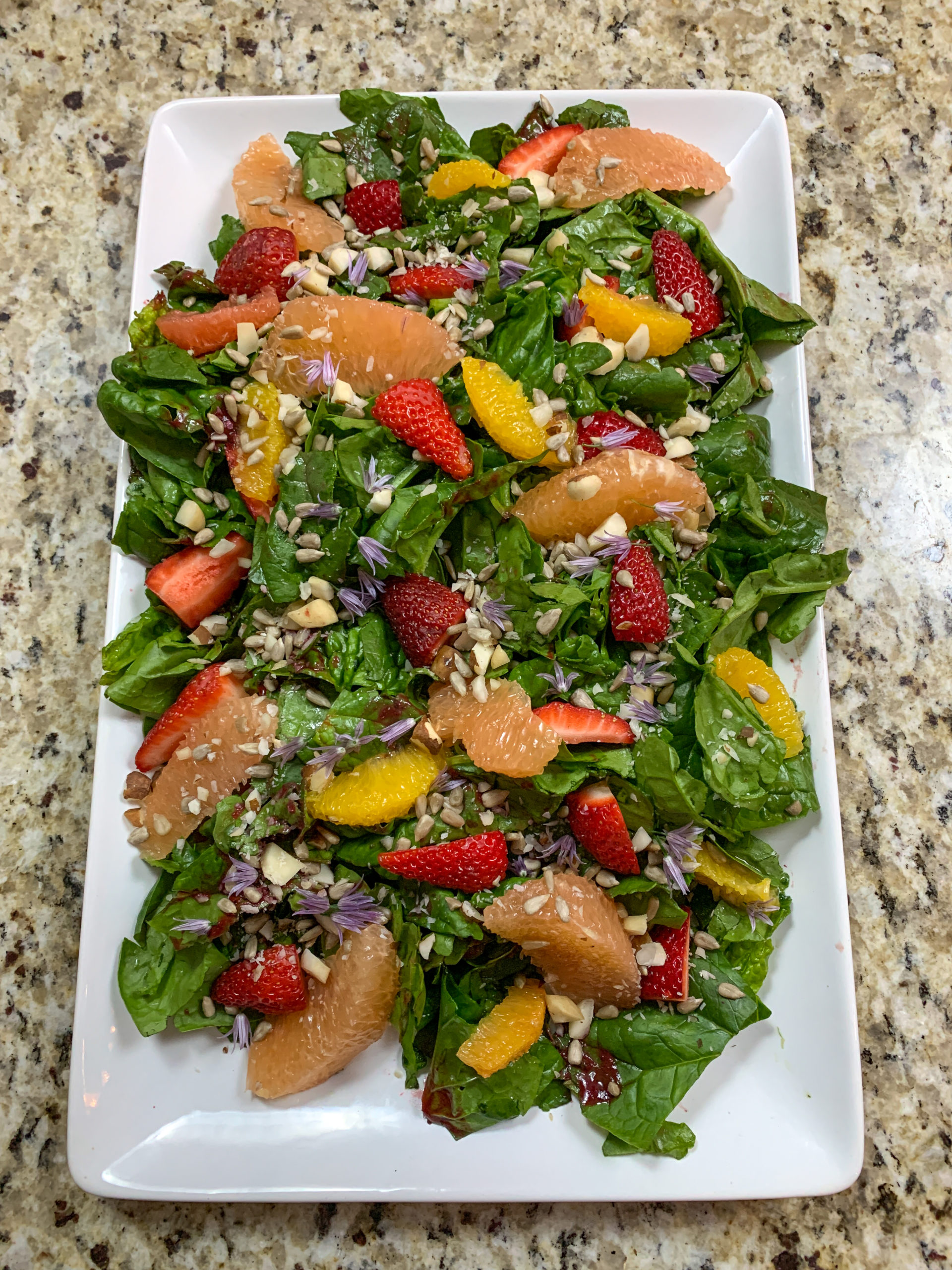
Chive Blossoms accentuate the chives in the dressing of this beautiful Citrus and Greens Salad
Nasturtiums
Nasturtiums were one of the first flowers I remember growing as a kid. They have big seeds and are easy for little fingers to plant. These showy flowers are an annual, meaning you have to replant them every year, but they readily reseed themselves when they drop their big seeds onto soil to start growing again in the spring. Nasturtiums come in a variety of colors, from yellow, peach, orange, and red, and do great in containers. The flowers and leaves have a peppery flavor that is wonderful in salads or with non-dairy cheeses.
If you don’t want nasturtiums to take over your garden next year, you can pick the green seeds before they dry out and drop to the ground. But don’t toss them, pickle them and use them as a home-grown substitute for green capers! I’ll show you how to do this in the fall.
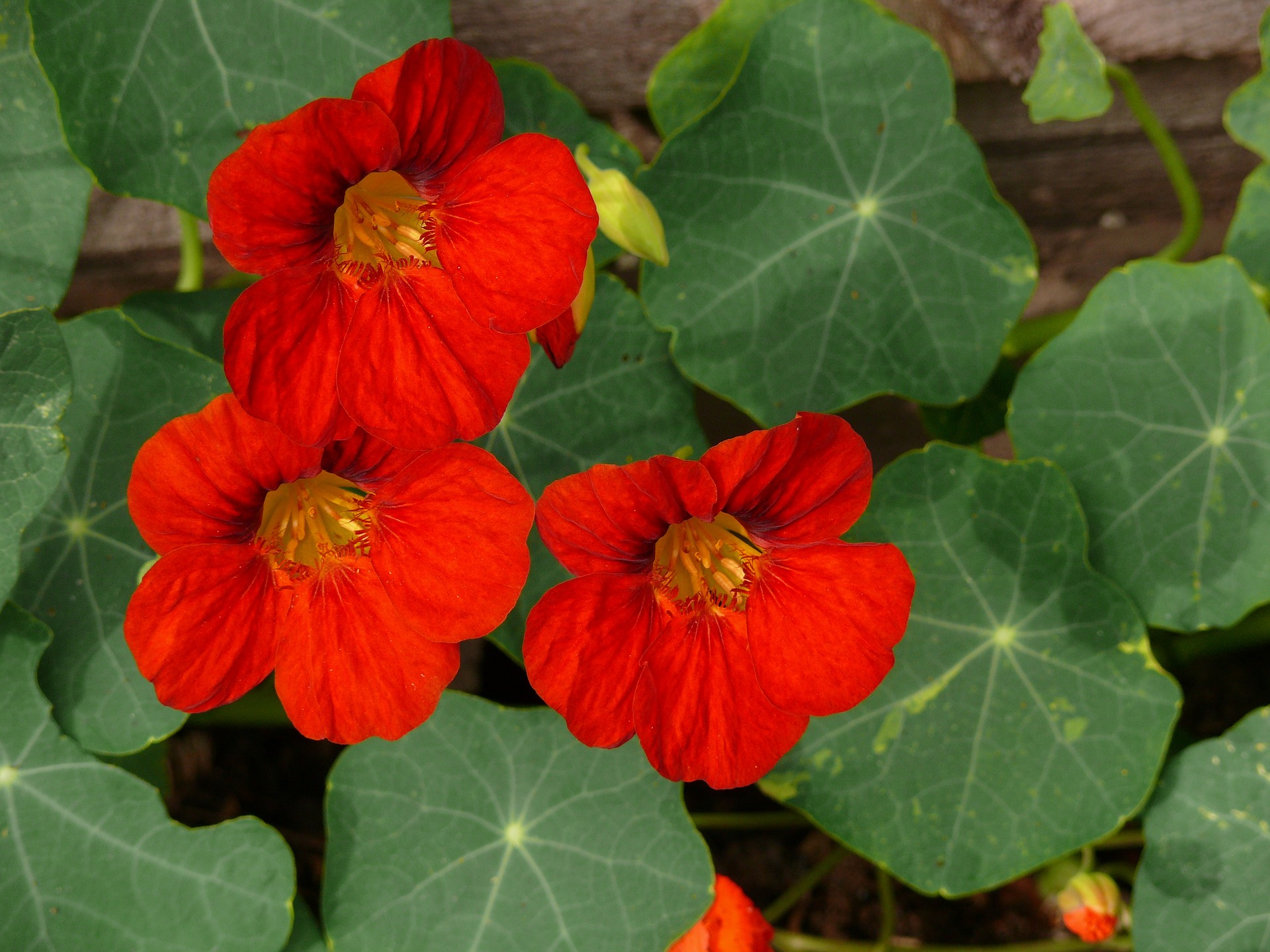
Peppery nasturtiums are easy to grow.
Pansies
These flowers come early in the spring and are an annual, like nasturtiums, but can come back year after year, like a perennial, if your climate is mild enough. They don’t have a lot of flavor, but they come in an amazing array of bright colors that are sure to bring a smile to your face when presented on a plate! You’ll often see these sugared on desserts. Simply brush pansies with simple syrup and sprinkle with fine granulated sugar and let them dry overnight before garnishing cakes and puddings.
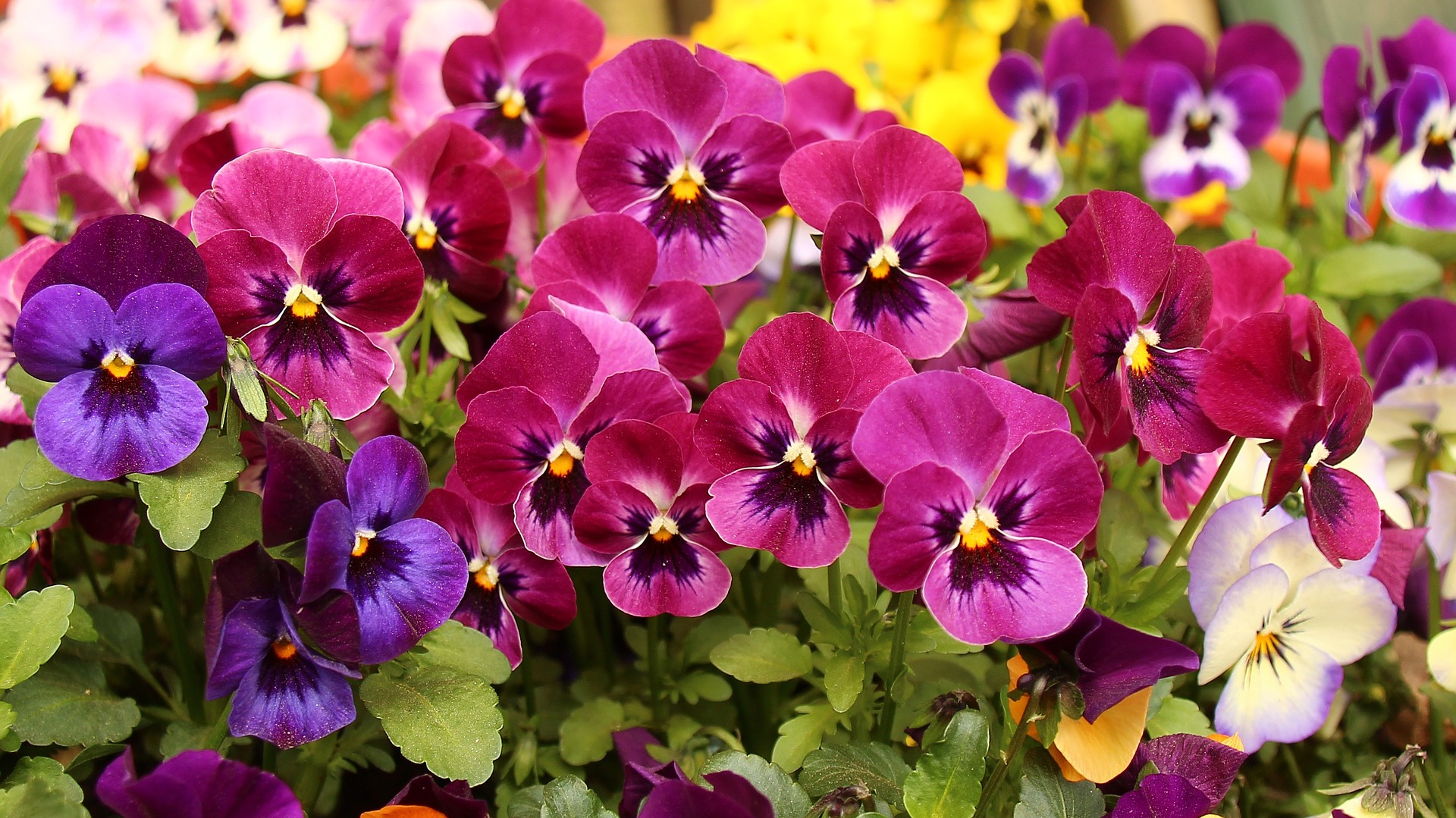
Plain or sugared pansies will definitely bring a smile to your plate!
Calendula
Calendula are related to daisies and sometimes called pot marigolds although they are not marigolds at all. Eat the petals only, which can taste slightly sweet to spicy to bitter, depending upon the type. Most are yellow or orange and can impart their color to foods, leading it to be called poor man’s saffron when used from dried. The petals are gorgeous in salads. They are easy to grow, both in garden beds and pots, and are a perennial.
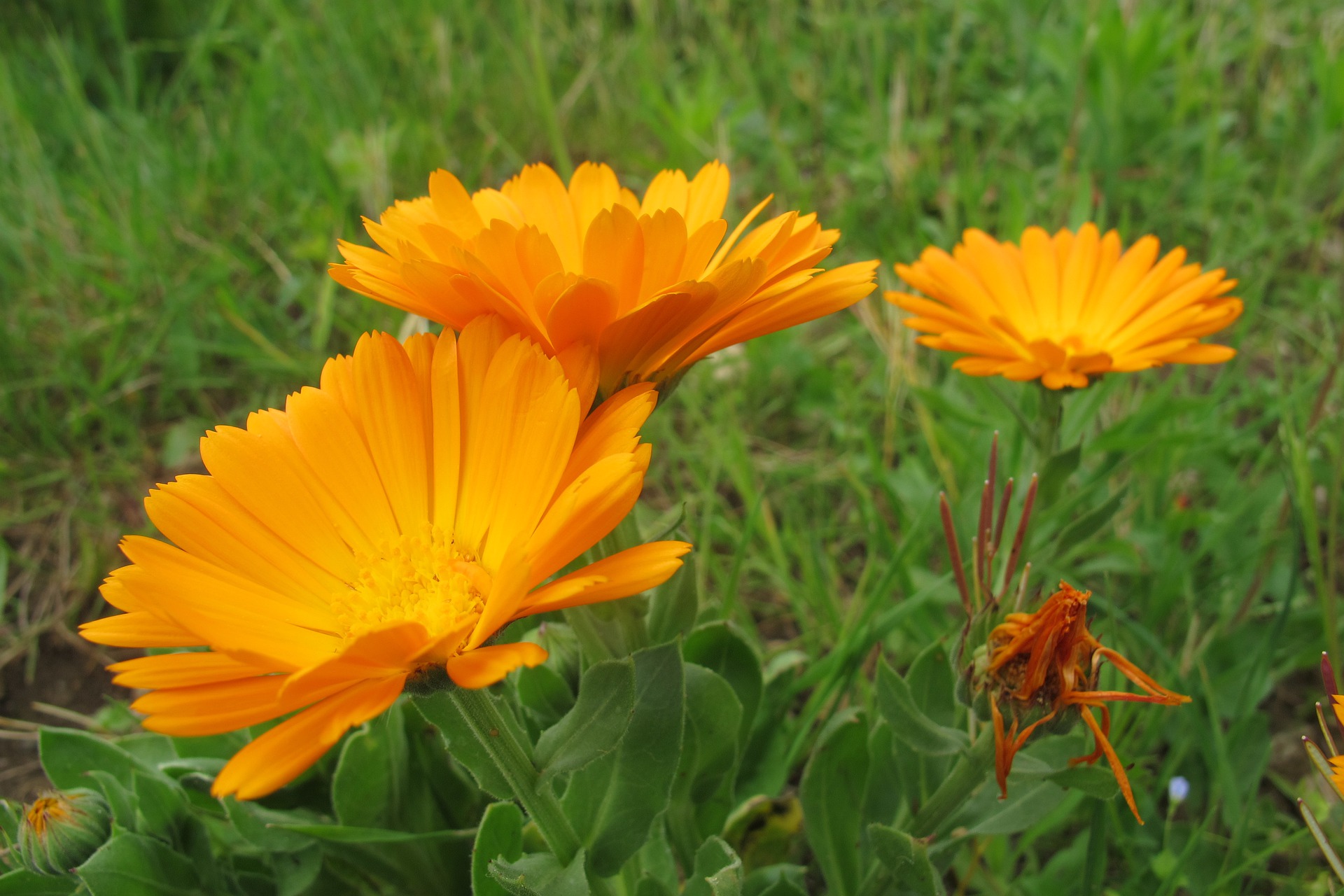
Calendula is sometimes called Poor Man’s Saffron.
Borage
Borage flowers are a gorgeous blue color and often called star flower. The plant itself is a culinary herb, known for its hairy leaves. Borage is an excellent pollinator plant, attracting bees, and is considered a companion plant for strawberries as it brings in bees to increase strawberry yields. The leaves and flowers have a cucumber flavor to them and are wonderful in beverages and on salads.
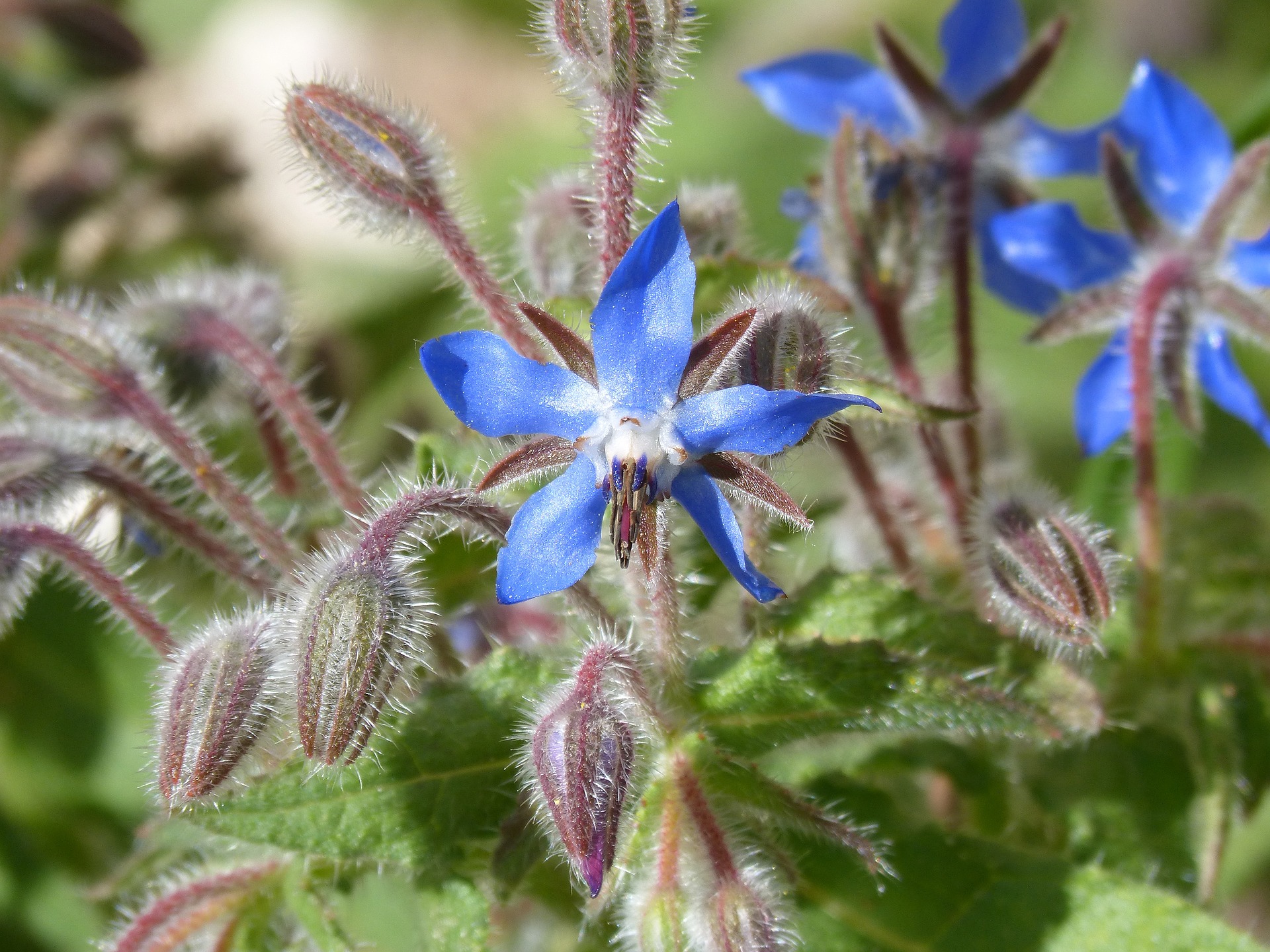
These blue-tiful flowers attract humans and bees!
Chive Blossoms
I love chive blossoms! Not only are they beautiful, but they are full of oniony chive flavor. Simply pinch these blossoms off and you get dozens of little purple flowers to sprinkle on salads, bread, non-dairy cheeses, hummus, anything you want chive flavor with. I also love to make chive-infused vinegar with these. Simple fill a jar with washed chive blossoms, cover with vinegar, and keep in your refrigerator. The result is a beautiful lavender-colored chive vinegar that is amazing on salads or in salad dressings.
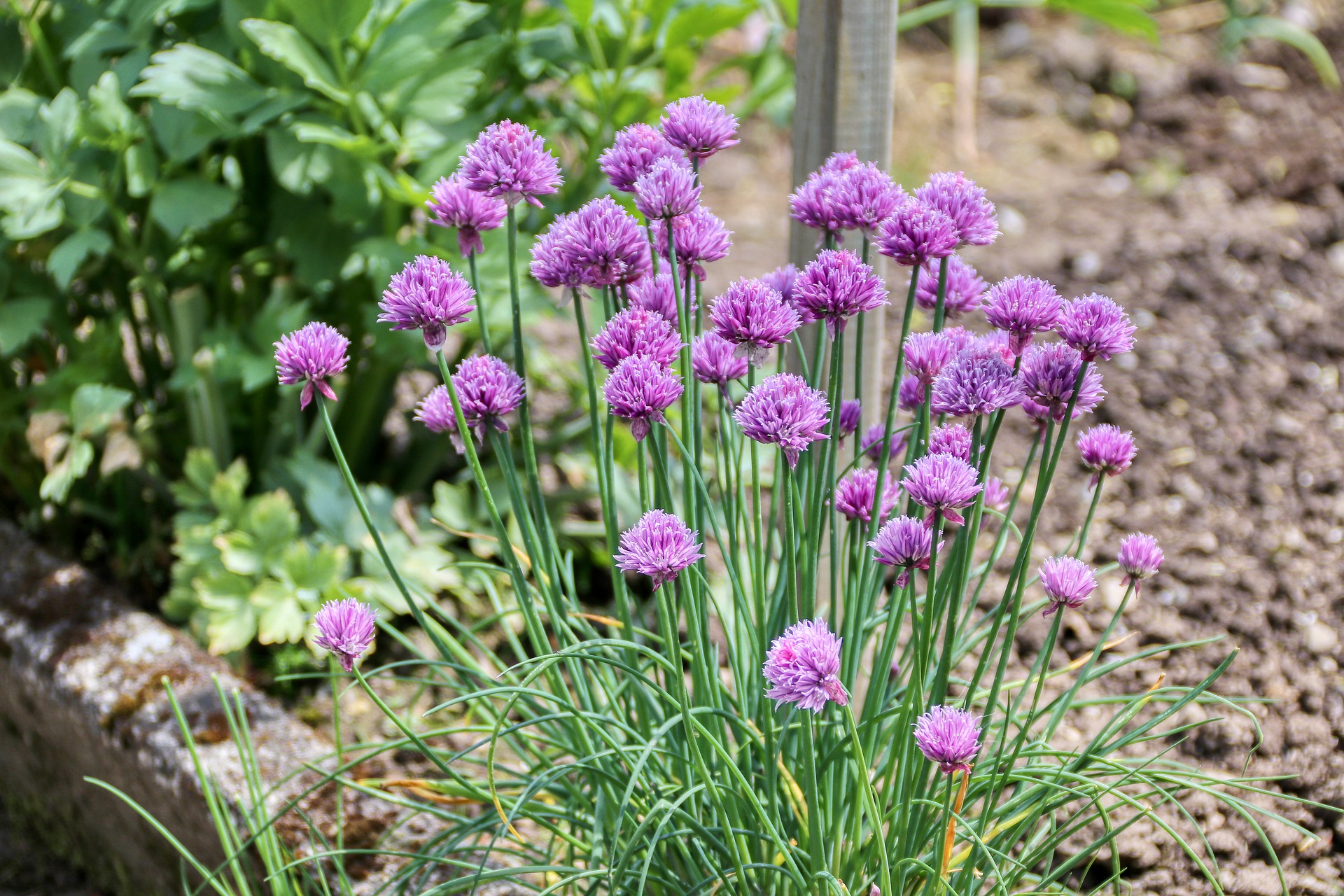
This is a feast for your eyes and your palate!
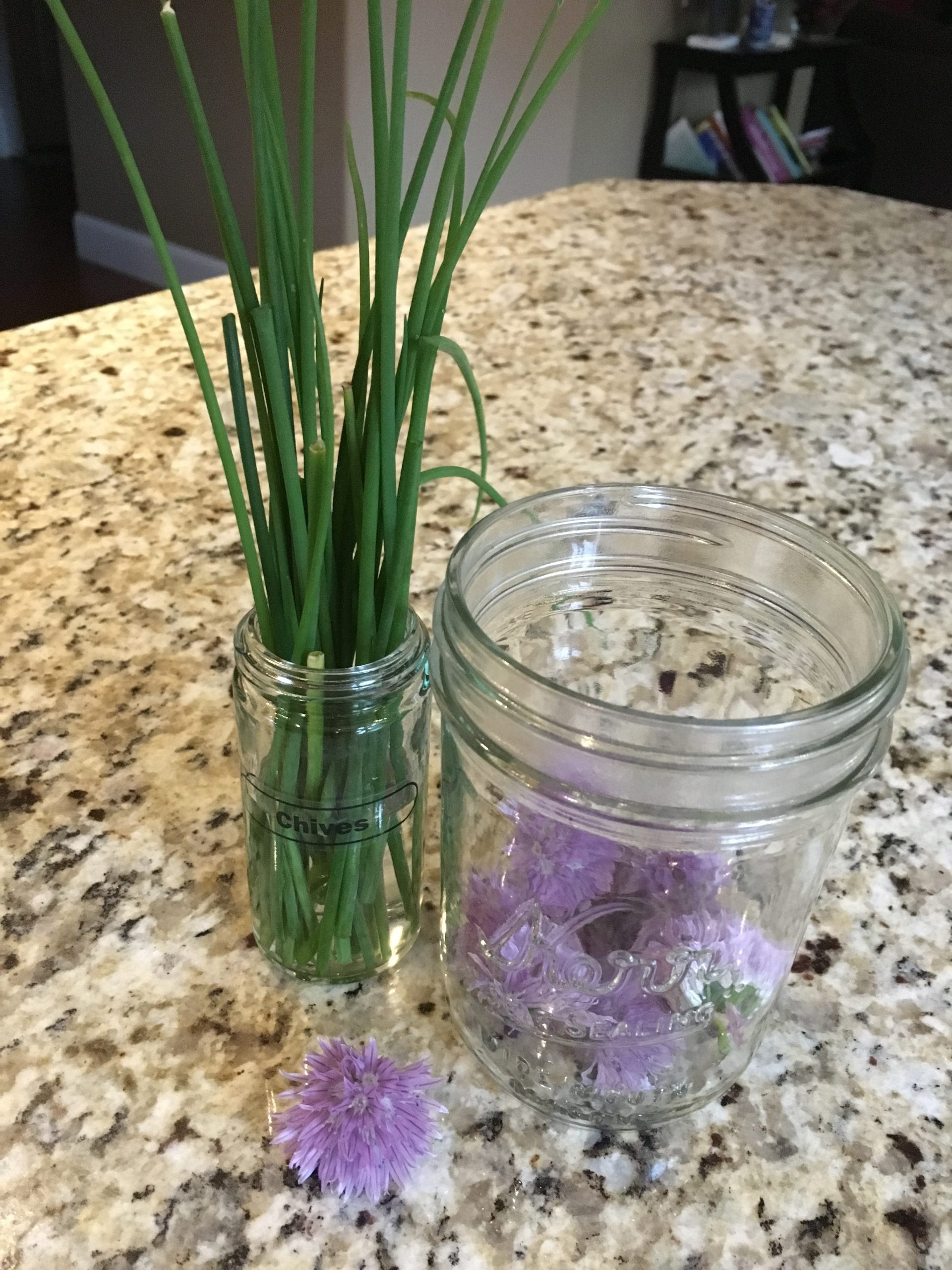
Top these blossoms with vinegar for an amazing infused vinegar.
Squash Blossoms
These giant blossoms are such a delicacy! Sometimes I plant extra squash just so I can have blossoms to eat, with no intention of letting them grow into squash. You’ll also find them at farmers markets for a fleeting time while in season.
My guilty pleasure is fried squash blossoms, something I learned from my ex-mother-in-law years and years ago. I dredge them in plant-based milk, flour, and then pan fry until golden brown…they simply melt in your mouth! Now that I don’t eat oil, I simply stuff these with plant-based ricotta cheese made from okara (leftover from making soy milk), dedge in panko crumbs, and bake until crispy. I’ll have a recipe for you when squash blossoms come into season.
You can also simply tear these blooms into pieces and put into your salads.
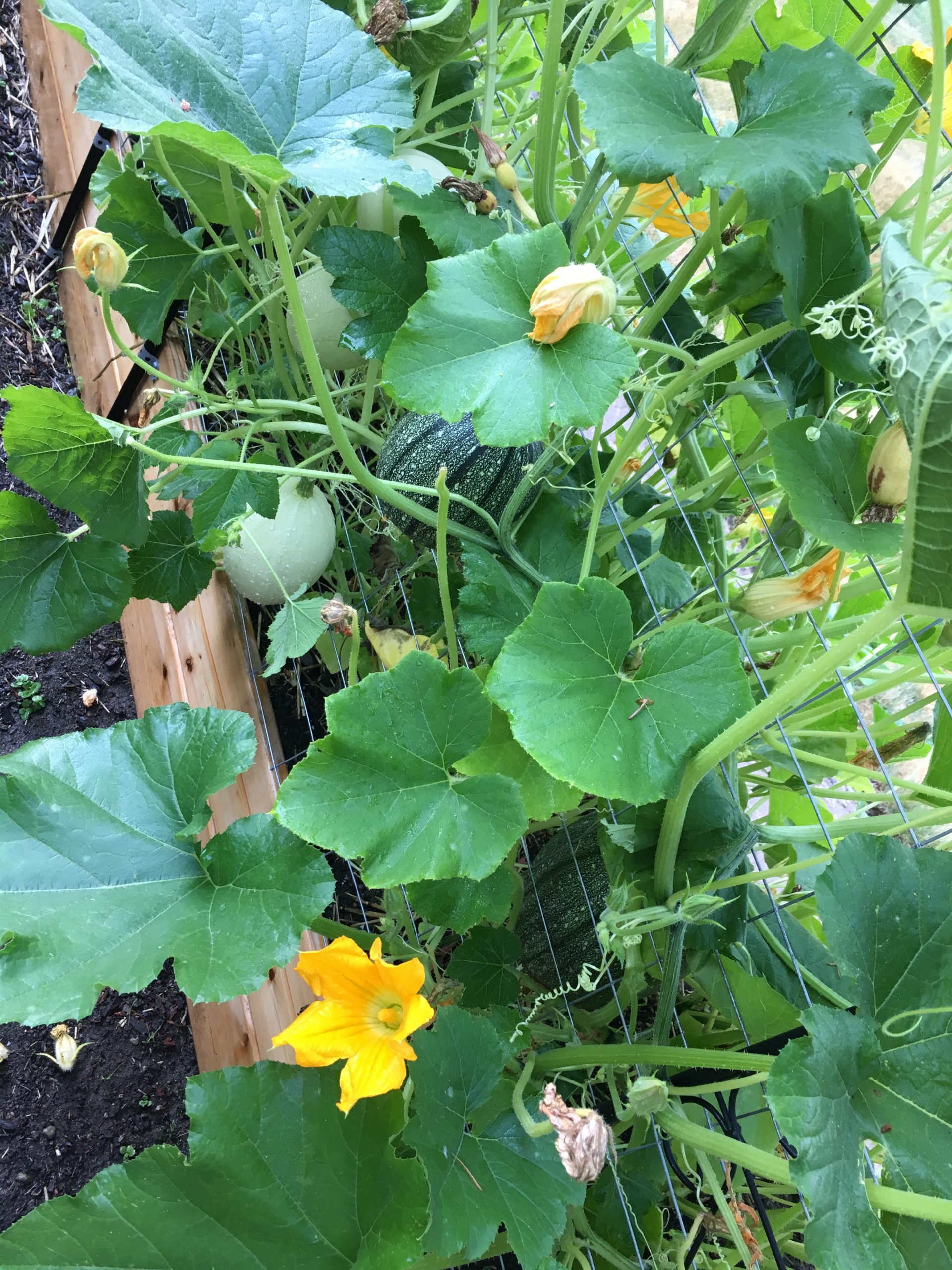
Squash blossoms make me giddy!
Marigolds
I grow marigolds along the front of my raised garden beds to keep harmful nematodes and flies out of my garden. Slugs and snails adore them, however, so I have to wait to put them out until they are big enough to handle those slimy creatures munching on them. But I’d rather slugs eat my marigold leaves than my beans and peas!
Marigolds have a citrusy flavor and pungent smell. Like calendula, they range from yellow to orange to red and can color foods similar to saffron. They are also a key ingredient in Amaro, a bitter-digestive. Here’s a recipe for making your own Amaro: Marigold Bitters
You can easily propagate you own marigolds, in fact, I’m growing marigolds descended from seeds my Grandma Janet harvested years ago and gave to me in an old glass jar. Simply let some of your blossoms continue growing until they dry out and then pinch and pull the dried spent blossom to remove the long seeds. Store these seeds in a cool, dry location and plant next spring. You never have to buy marigold seeds or plants ever again!
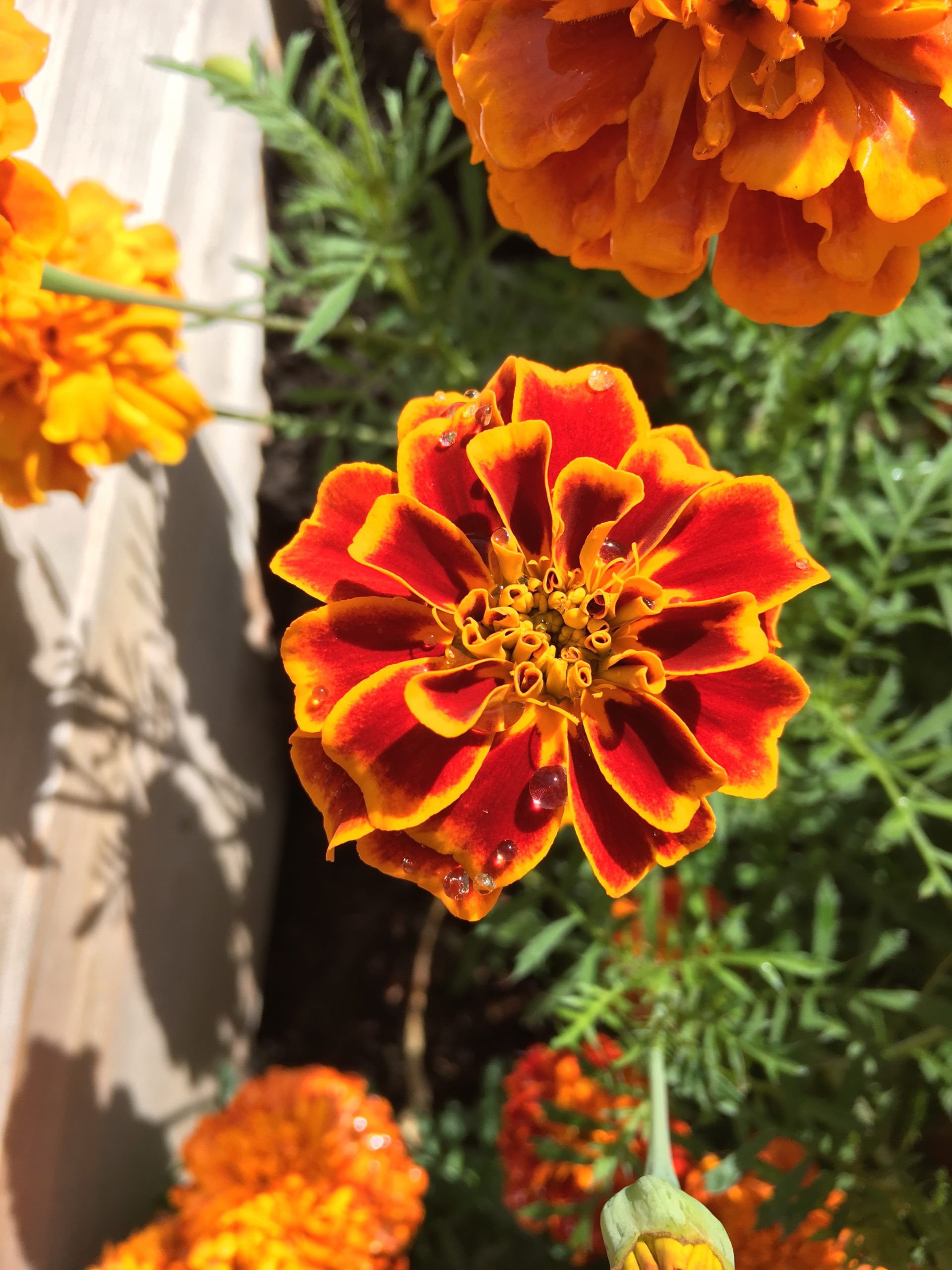
Keep garden pests and tummy aches away with marigolds!
Lavender
These are Alan’s favorite! Not only does lavender smell divine, but it imparts a delicious floral component to food. Add lavender flowers to non-dairy cream, like cashew cream or coconut cream, before making ice cream for a delicious spin on a summer treat. You can also make a savory spice blend called Herbs de Provence, which is wonderful with mushrooms, vegetable stews, and sprinkled on white bean dip.
Herbs de Provence Blend:
1 tablespoon each: dried lavender, rosemary, savory, thyme, basil, marjoram, and parsley
½ tablespoon each: crushed fennel seed, oregano, tarragon
1/8 teaspoon powdered bay leaves
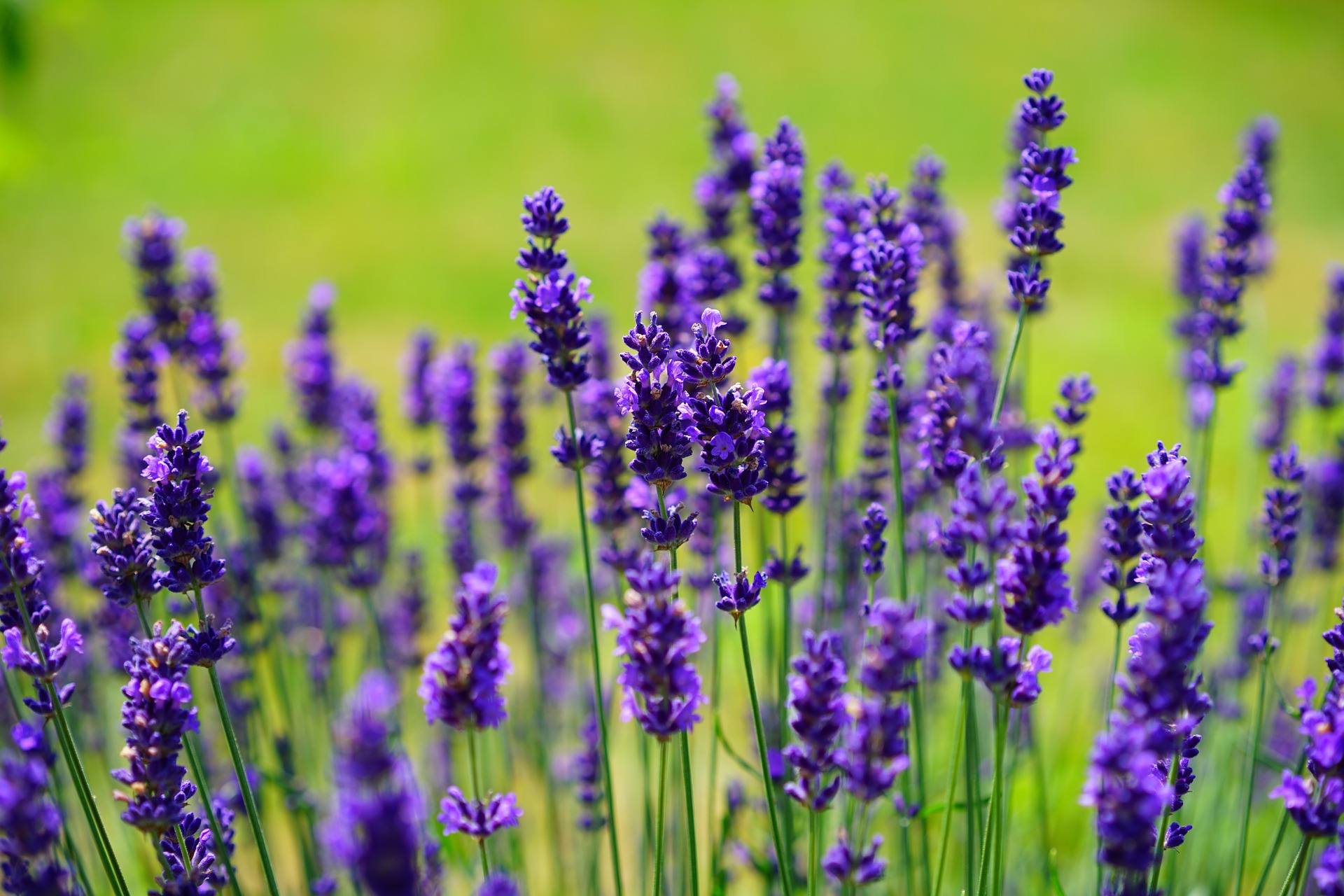
I can almost smell the lavender through the screen!
Scarlet Runner Bean Blossoms
We love to grow scarlet runner beans. They are so easy to grow, so prolific, and showy. Hummingbirds love the blossoms, as do other pollinators, and you can actually eat the blossoms as well. The blossoms don’t have a lot of flavor, but they are crunchy, sweet, and absolutely gorgeous on a salad. We don’t tend to eat a lot of these because we’re obsessed with the beautiful dried beans they produce. You can learn more about using scarlet runner beans from my previous post on Scarlet Runner Beans.
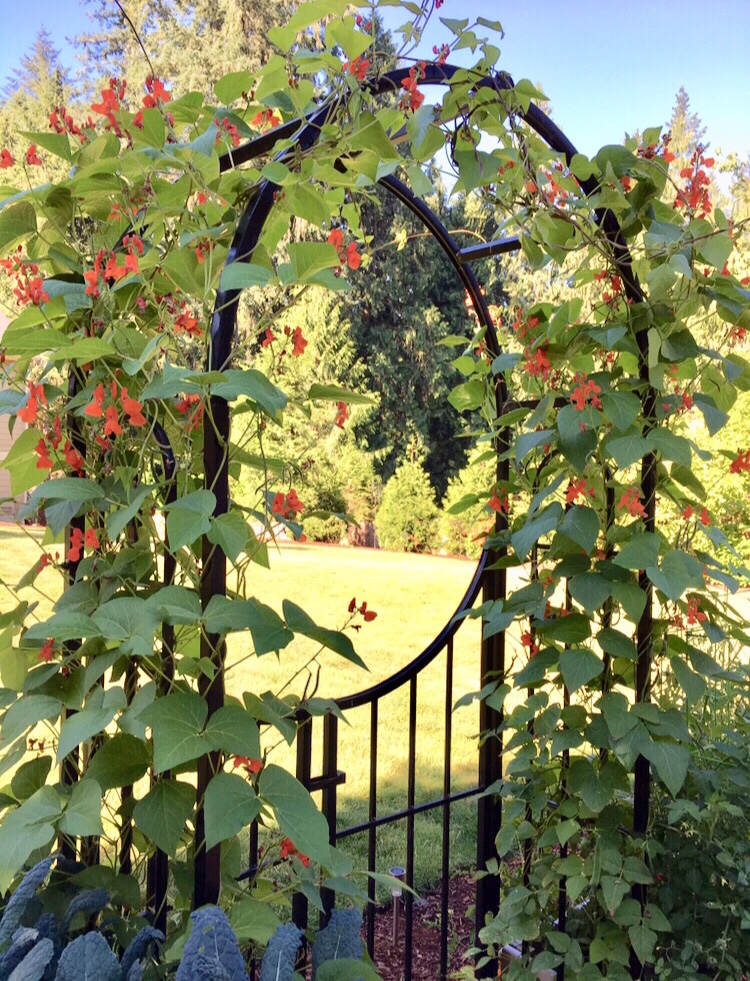
Scarlet Runner Beans make me smile!
Cherry Blossoms
Oh boy, these are some of my favorites and they are so special! Cherry blossoms are a spring fling and I wait very impatiently for them. The blossoms don’t have a lot of aroma, but the stems and leaves impart a big cherry smell and flavor once fermented, salted, and dried. These blossoms are called sakura and have a whole festival dedicated to them in Japan. I have a whole post dedicated to cherry blossoms, including how to prepare them and use in my favorite nice cream, Sakura Nice Cream.

Life is like a bowl of cherry….blossoms!
Roses
Like pansies, roses can be sugared or the petals eaten fresh. There are just so many colors and are a beautiful addition to any food, particularly salads. Many rose bushes are sprayed with pesticides and fungicides, so many sure you know your source or buy food-grade rose petals that haven’t been treated.
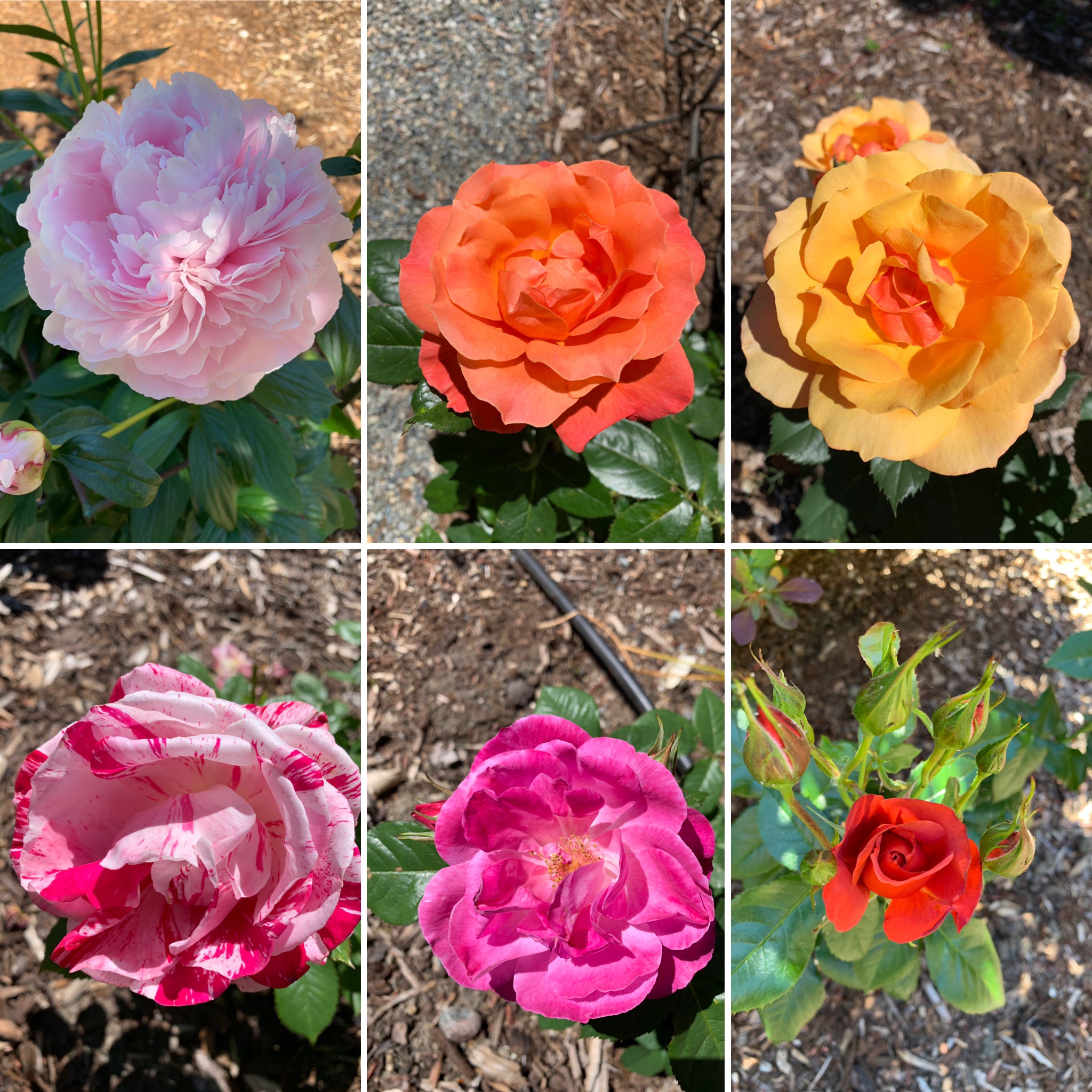
Just a few of the beautiful specimens we grow at the Lakehouse.
Mustard, Kale, and other Brassica Blossoms
Broccoli is a very popular flower we eat and don’t even realize we’re eating flowers! Each little broccoli bud is a flower in the making, which eventually turns into a delicate yellow bloom. I let some of my kale, mustard greens, and other brassicas go to flower so I can use them in our salads. They are sometimes a little spicy, mustardy, which I like.
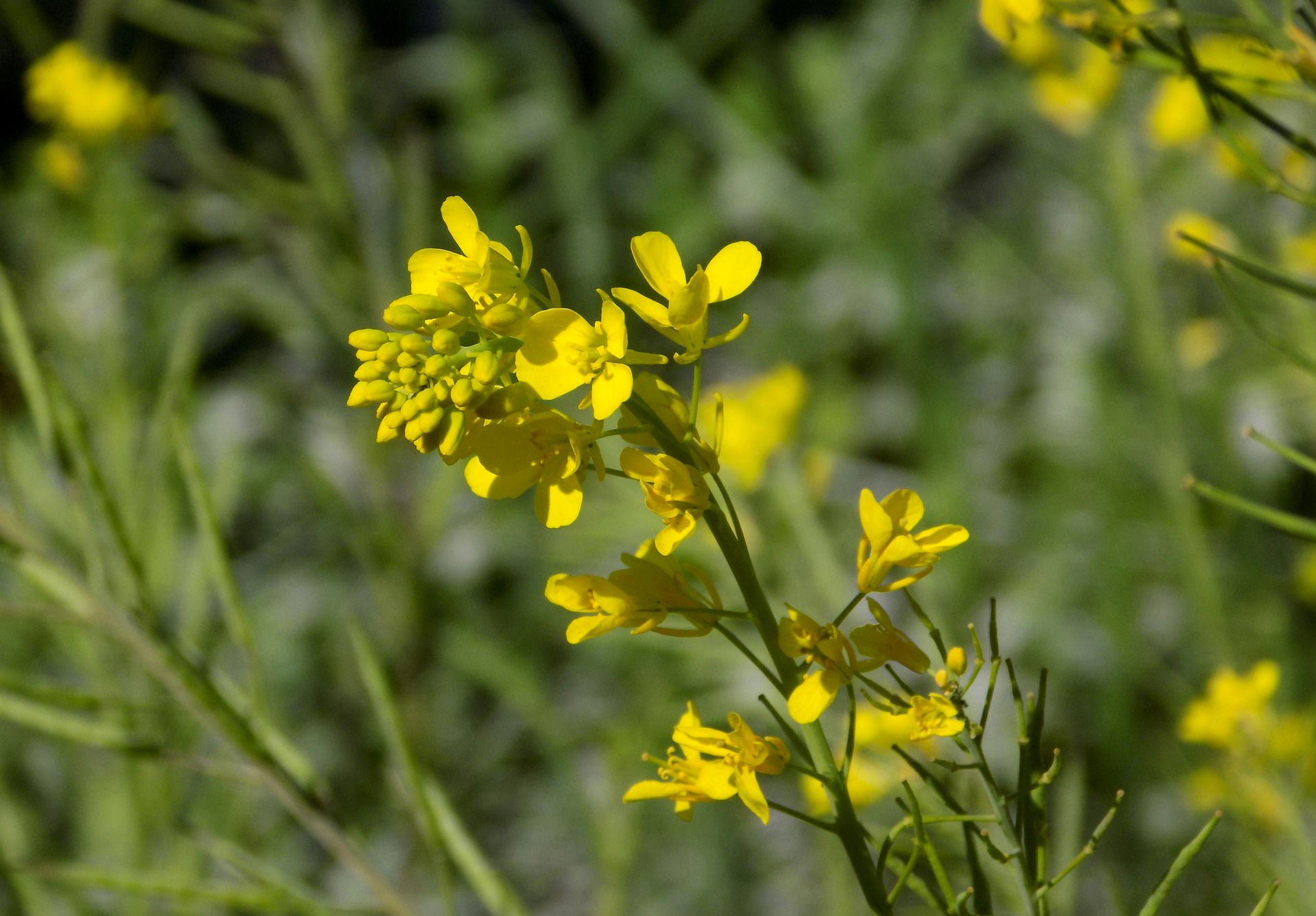
Kale blossoms from my garden.
Butterfly Pea Flowers
These amazing flowers are from the clitoria ternatea plant common to Southeast Asia. I’ve not grown these, but I ordered some seed to try it out next year. You can find these dried in some specialty stores and online from Amazon. They readily color liquids a beautiful blue color which quickly changes to purple or pink in the presence of an acid. You can learn more about these gorgeous flowers in my post about making Infused Water.
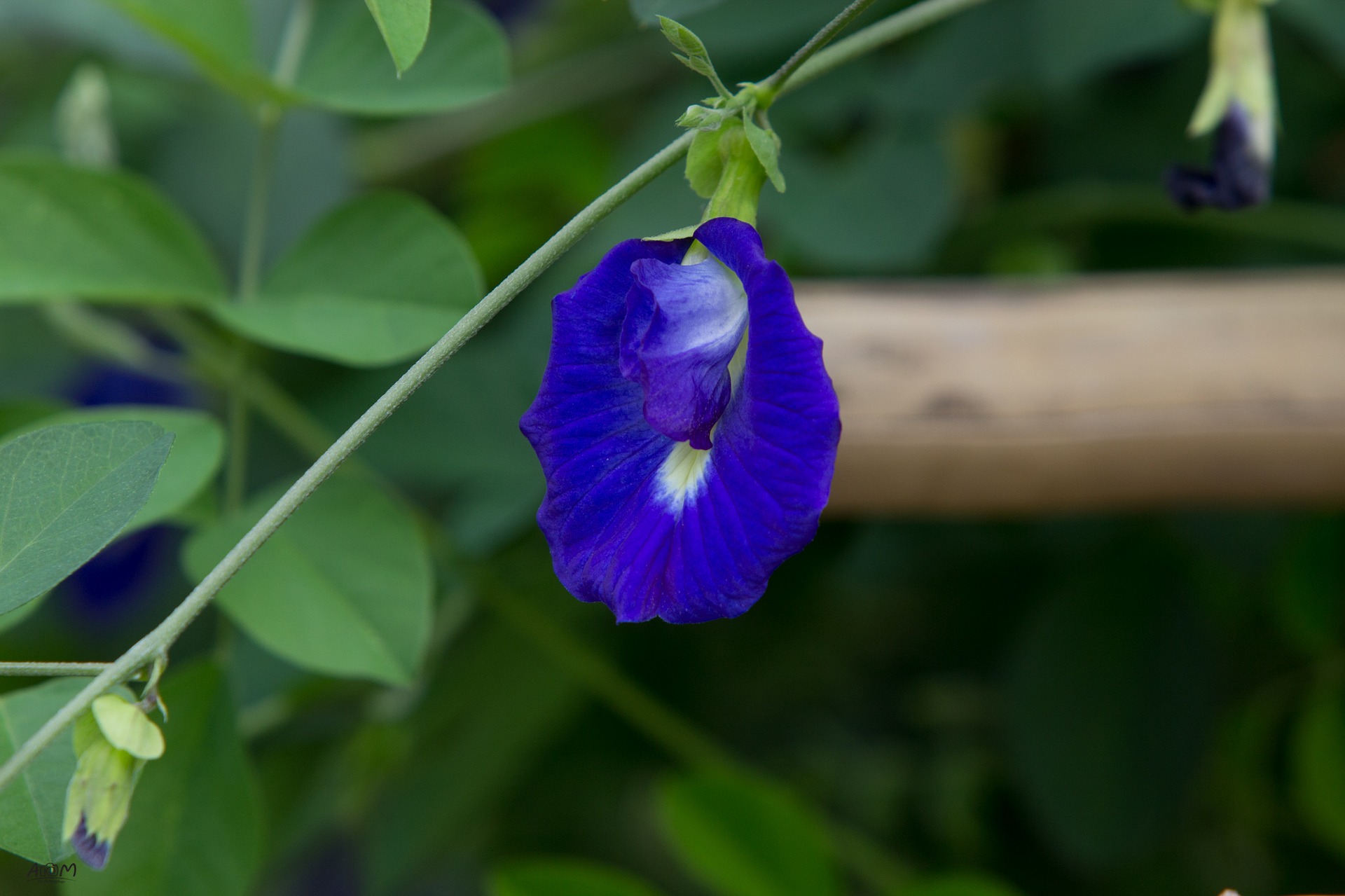
The flower with the dirty botanical name!
Hibiscus
When I think of Hawaii, I think of the hibiscus flower. It is the iconic flower-in-your-hair flower, but is deliciously edible! Believe it or not, you can grow hardy hibiscus stateside, often known as Rose of Sharon. Hibiscus comes in a rainbow of colors, even blue! You can use hibiscus in salads, in tea, and even make jellies with it. It ranges from sweet to tart and is one of the main ingredients in Zinger teas.
Do be mindful that hibiscus does have a potent antihypertensive effect, that it, it can lower your blood pressure. So don’t eat or drink large amounts of hibiscus at a time. You can learn more from NutritionFacts.org.
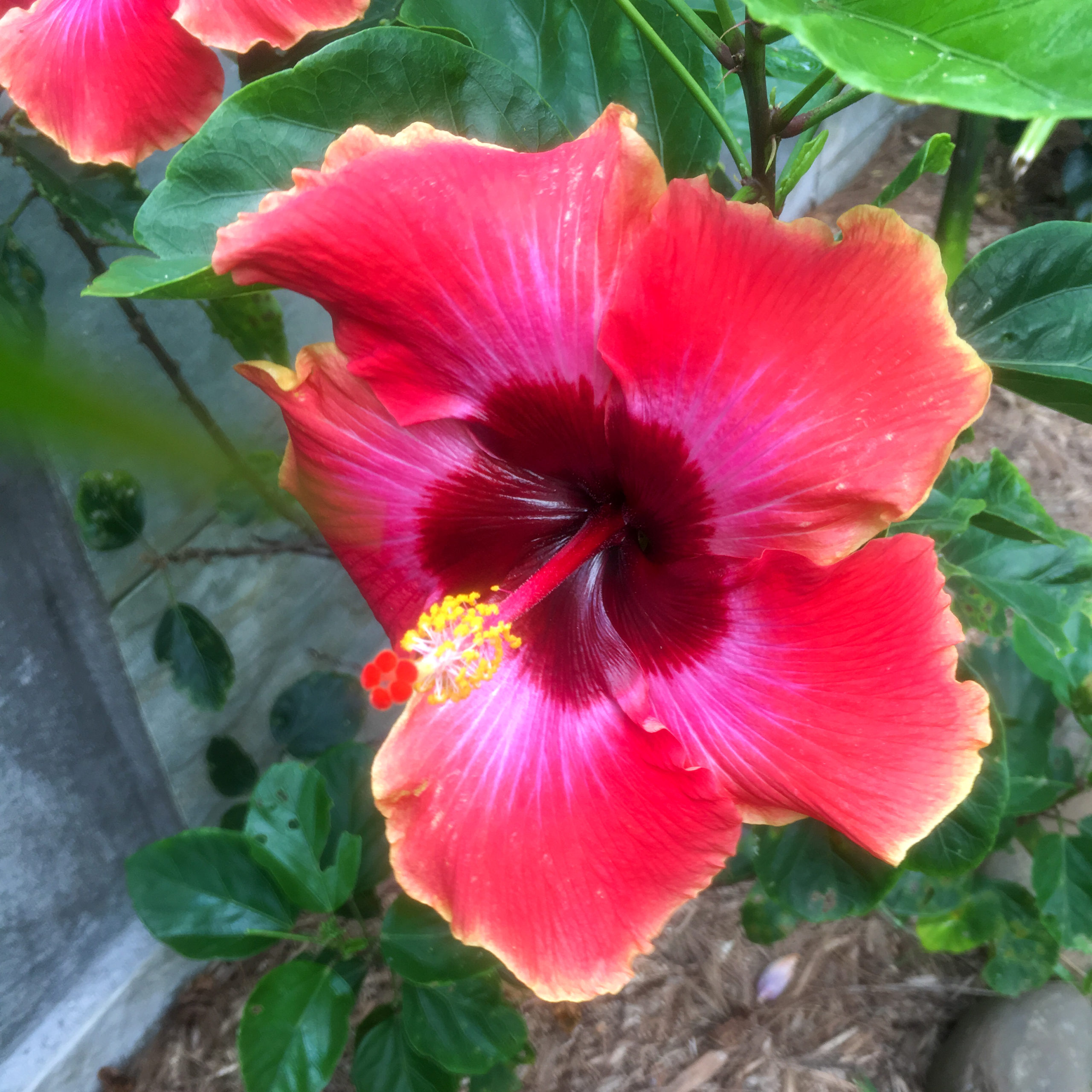
One of a billion pics I took of hibiscus on a recent trip to Hawaii!
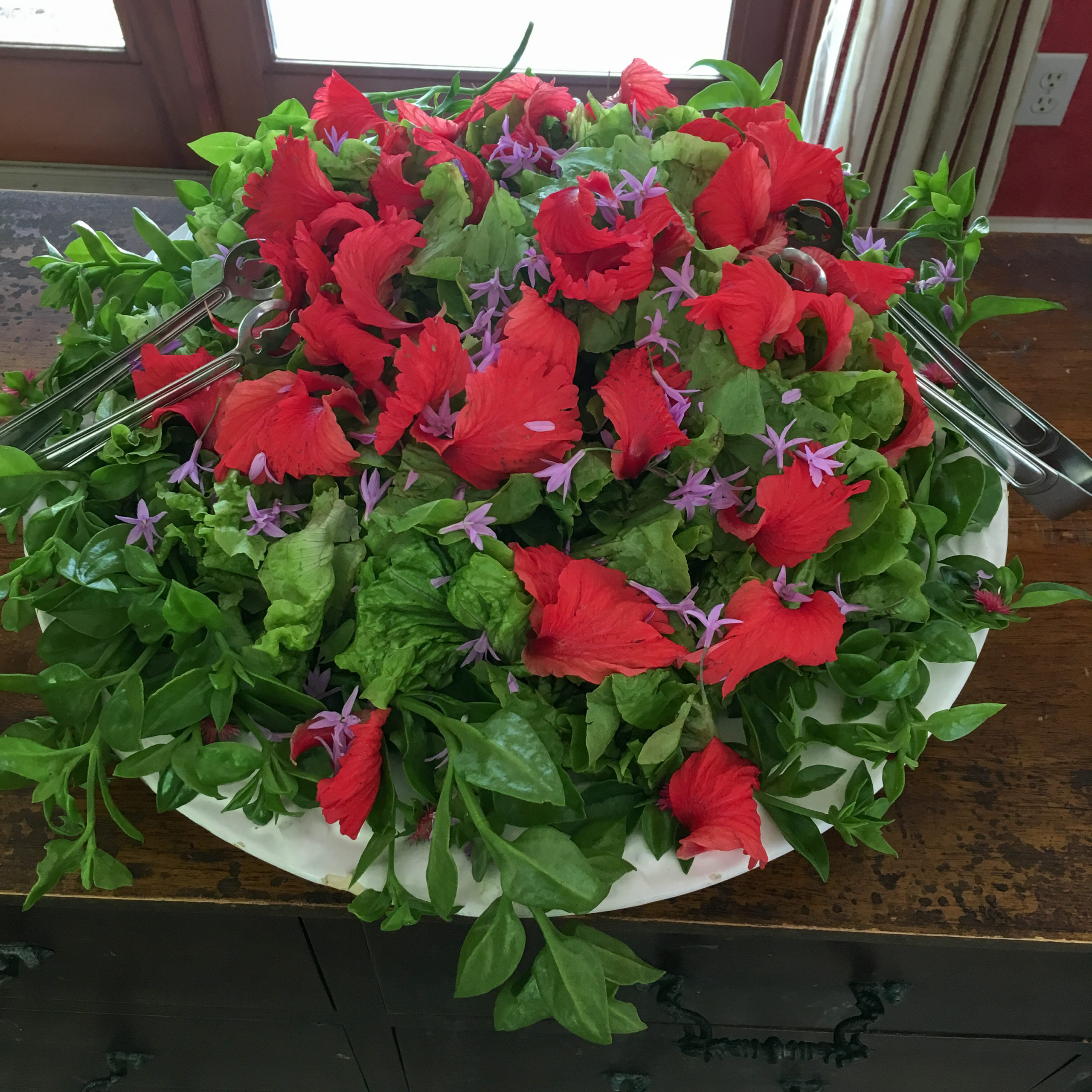
This hibiscus-garnished salad looks like a bouquet!
There are so many other edible flowers, but these are some of my favorite. Do your research before popping any ol’ flower in your mouth to make sure it’s edible, not poisonous, and not sprayed with things you don’t want to eat. But definitely consider these colorful and flavorful additions to your food to add more phytonutrient and antioxidants to your daily rainbow!
What are your favorite flowers to eat and how do you eat them?
Do you like this post? Please share....
If you liked this post, you might like one of these:
Categories:
Tags:
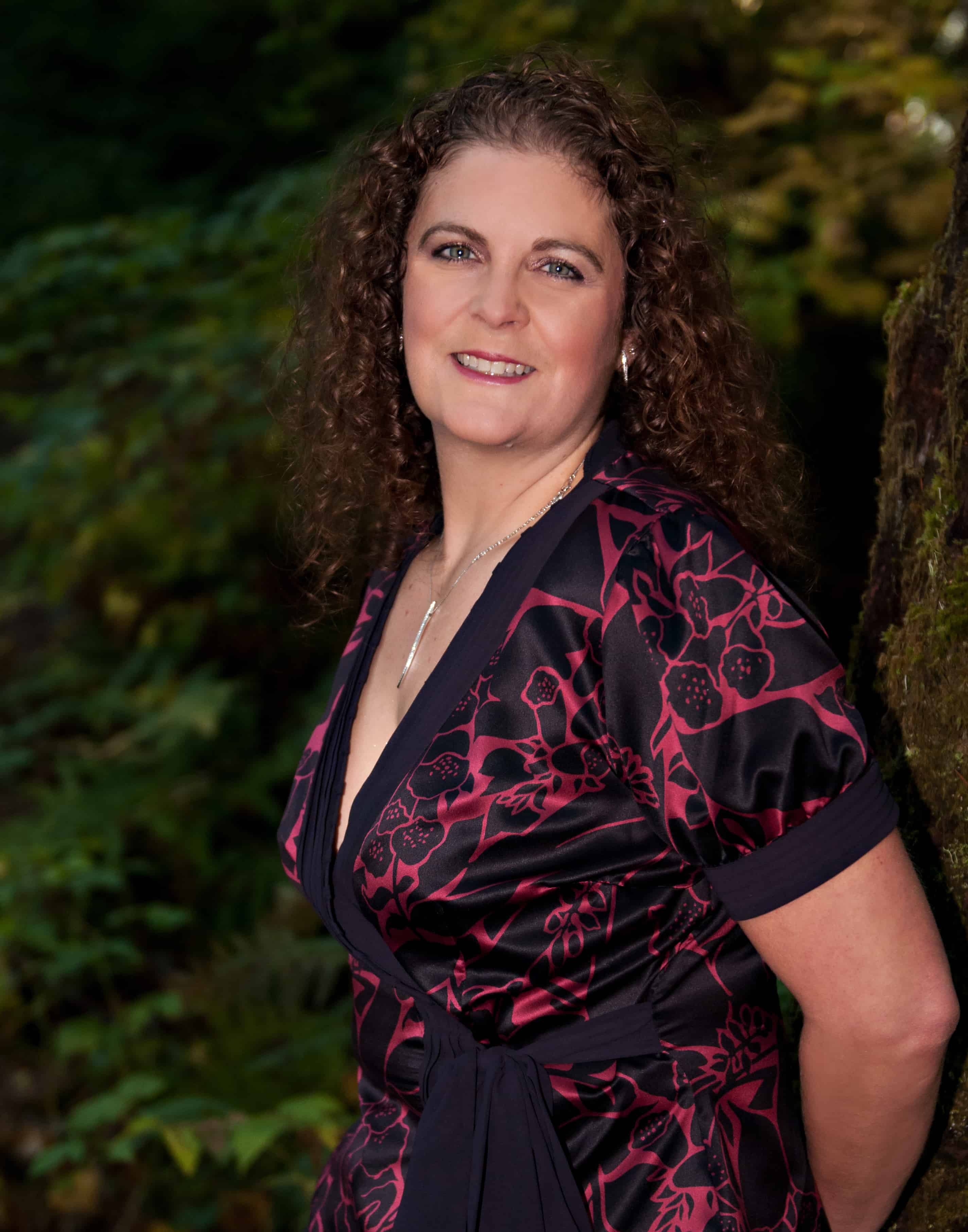
[Trī-māz-ing]
Cindy wants you to be Trimazing—three times better than amazing! After improving her health and fitness through plant-based nutrition, losing 60 pounds and becoming an adult-onset athlete, she retired from her 20-year firefighting career to help people just like you. She works with people and organizations so they can reach their health and wellness goals.
Cindy Thompson is a national board-certified Health and Wellness Coach, Lifestyle Medicine Coach, Master Vegan Lifestyle Coach and Educator, Fitness Nutrition Specialist, Behavior Change Specialist, and Fit2Thrive Firefighter Peer Fitness Trainer. She is a Food for Life Instructor with the Physicians Committee for Responsible Medicine, Rouxbe Plant-Based Professional, and Harvard Medical School Culinary Coach, teaching people how to prepare delicious, satisfying, and health-promoting meals.
She provides health and lifestyle coaching at Trimazing! Health & Lifestyle Coaching. Cindy can be reached at info@trimazing.com.
Subscribe to the Trimazing Blog
Receive occasional blog posts in your email inbox.
Subscribe to the Trimazing Blog
Receive occasional blog posts in your email inbox.

